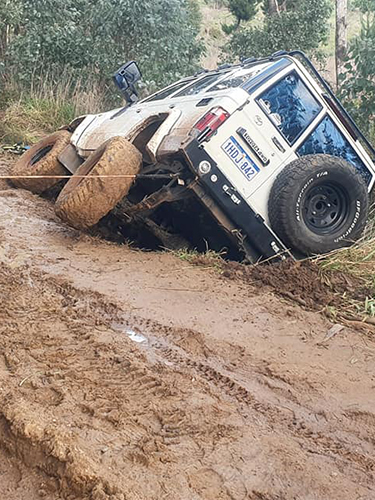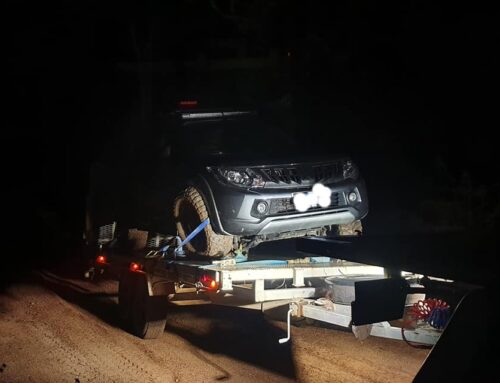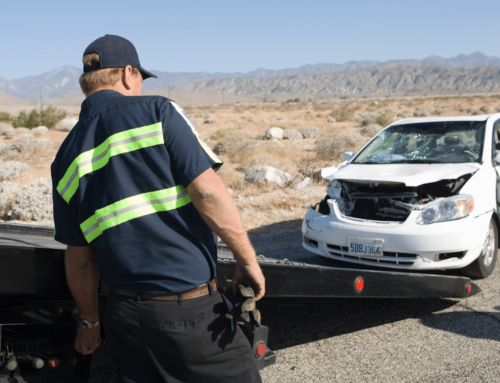Finding yourself bogged can be a frustrating experience, particularly when you are on a long-planned road trip or exploring the bush tracks on the weekend. Whether it is sandy terrain or muddy tracks, getting bogged can turn a great day out into a stressful, and time-consuming situation, particularly if it is getting late or you still have some way to your next safe stop.
What you do when your vehicle is bogged could be the difference between getting yourself out of trouble or having to call for a recovery vehicle.
What Not to Do When Bogged
When we find ourselves bogged in mud or other terrain, it can be natural to try and drive ourselves out. But doing so can get you stuck even further. Here are some things you shouldn’t do when your vehicle is bogged.
Spin Your Wheels – continuously spinning your wheels by trying to drive yourself out can dig your vehicle deeper and make the situation far worse. We know that it is instinctual to try and drive out of a bog, but if it fails once, you shouldn’t continue trying.
Abandon Your Vehicle – you may be inclined to walk away from your vehicle to find help or to get a better phone reception. Unless it is necessary for safety reasons, you should avoid leaving your car. It provides shelter, a safe place to rest, and is more visible to rescuers than a person is. To ensure you don’t need to leave your vehicle, we recently looked at the safety precautions you should take when going four wheel driving.
Ignore Safety Precautions – this one shouldn’t need to be said, but many people get far too close to a bogged vehicle. Those who aren’t attempting to free the vehicle should avoid standing in a dangerous place, close to the vehicle where they could be injured. Before attempting to move your car, you need to make sure all bystanders are at a safe distance.
Overexert Your Engine – There’s a good chance that the first thing you will do when you find yourself bogged is to rev your engine while attemping to free yourself. But this isn’t always a good strategy. Revving your engine excessively can lead to overheating and engine damage. You should avoid putting any unnecessary strain on the car engine.
Not Take Note of Your Surroundings – One of the most important things that people often forget to do is to take note of their surroundings, particularly in remote areas. Factors you should be looking for are wildlife, potential hazards, and weather conditions, as these can all affect your situation. We also recommend making a quick note of the last town you passed through so that you can be recovered quicker when needed.
Things to Do When Bogged
Now you understand what you shouldn’t do when bogged, what should you do? It is essential to understand the basics of what you should do if your vehicle is stuck in mud or other terrain, and that’s because a recovery vehicle could be some way off, particularly if you are stuck in a remote or hard-to-reach area.
Assess the Situation – Before you do anything else, take a moment to breathe and assess the situation calmly. Your next steps will be based on the depth and consistency of the bog, and the condition of your car. It is natural to feel frustrated or anxious when you are bogged, but staying calm and focussed will help you assess the situation better. If there are other passengers in the car, you will also want to consider if you need to move them to a safe location away from the car.
Switch off Traction Control – If your 4 x 4 has traction control, you should consider turning this off. Unfortunately, these systems can stop you getting your car unstuck as they can cut power to the wheels just when you need it the most.
Clear the Area around the Wheels – This is where the shovel from your emergency supplies kit comes in handy. Use a shovel (or if you don’t have one, any available tool such as a stick) to clear away mud or sand from the wheels. This gives your tyres better traction when you attempt to un-bog yourself.
Use Traction Aids – Another key component of your emergency supplies kit should be a traction aid, whether this be a traction board or sand tracks. If you have nothing else to use, even your car floor mats should give you enough to improve traction, helping you get your vehicle out of a slippery situation.
Use a Rocking Motion – Once you have everything set up, you should attempt to gently rock your vehicle back and forth, shifting it between reverse and drive (if you have a manual transmission this would be between reverse and a low gear) to help the car gain momentum and hopefully get out of the bog.
Call for Assistance – If all else fails, and you are unable to free your vehicle, don’t hesitate to ask for assistance from other drivers in the area (this is also a great reason why travelling with another group is a good idea), or call for professional recovery assistance.
We always recommend that everyone who is with you on your adventure has an idea of what they should and shouldn’t do if your vehicle is bogged or stuck. By keeping these Do’s and Don’ts in mind, you’ll increase your chances of getting your vehicle unstuck safely and efficiently.
Remember, it’s always good to be prepared. Consider keeping a basic emergency kit in your car that includes items like a flashlight, jumper cables, a tow rope (use with caution!), and a shovel for digging out loose debris. You should also keep on your phone the contact details of a 4 x 4 recovery team should you not be able to get yourself out.





Leave A Comment